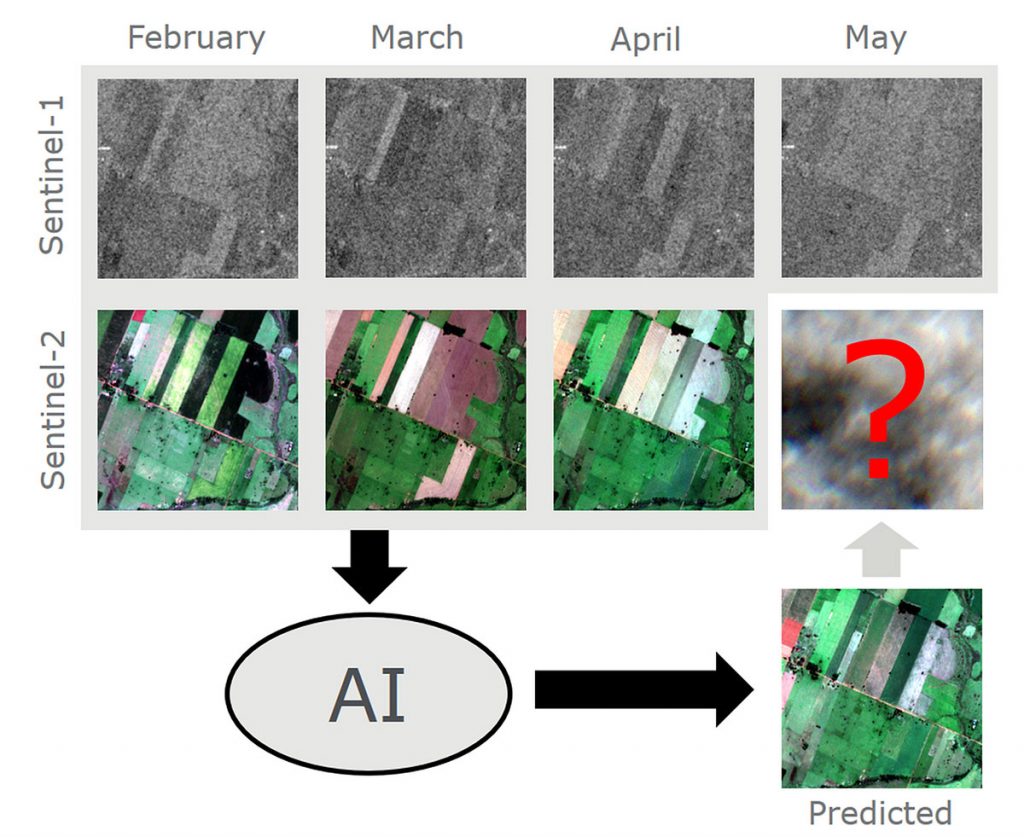
Gaps in time series caused by cloud cover are one of the main issues affecting optical imagery. Clouds are a serious obstacle in continuous land and water monitoring, which involves capturing the current status of the plant phenology. A reconstruction of areas below clouds offers a way to improve the accuracy of many applications based on optical images, especially those using Copernicus Sentinel-2 data.
Recent developments in AI, together with unprecedented volumes of Sentinel-1 and Sentinel-2 data, offer new opportunities for a solution to reconstruct land surface information normally hidden by the clouds. While some attempts already performed on pairs of radar and optical images are promising, an exploitation of time series information can bring even more to attempts at solving the problem.

This activity aims to design, implement and run a scientific competition on the reconstruction of land areas hidden by clouds on Sentinel-2 data using time series of Sentinel-1 and Sentinel-2 data. The competition is organised in cooperation with ESA’s Advanced Concepts Team, which has created ESA’s Kelvins platform to run scientific competitions. This activity is also supported by CLAIRE (Confederation of Laboratories for Artificial Intelligence Research in Europe), having been identified as one of the most interesting topics for the pure AI community during the first ESA-CLAIRE workshop.
In order to attract pure AI specialist participants, a minimum level of EO knowledge will be required. If successful, the competition could lead to a model to map the relationship between radar and optical data, which has not yet been established due to the different physical nature of these two types of measurements.
The competition is now in a preparatory phase. An initial sample of a globally representative dataset containing Sentinel-2 and Sentinel-1 time series has been designed and prepared. Work is currently underway to develop a baseline solution to maximise the potential of the competition.
Share